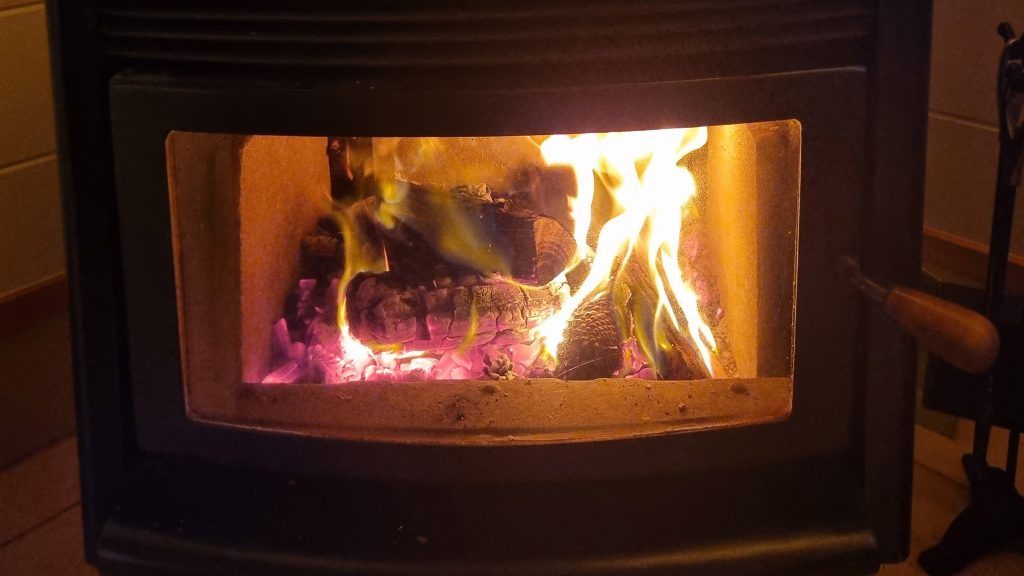
As the winter nights draw in, there’s nothing quite like the warmth and cosy glow of a wood burner gently radiating its comforting heat. As I placed another log on the fire, I found myself reminiscing about my personal journey with Commodore and Amiga computers. It all started back in 1980 when I was contemplating building a Sinclair ZX80 kit. The evolving home microcomputer market was experiencing a period of rapid expansion and innovation. Development varied widely, with individual enthusiasts and major corporations like Apple, IBM, and Commodore all contributing to the industry. Small teams and startups, driven by passion and creativity, worked alongside industry giants, bringing a hands-on approach to the market. While startups focused on flexibility and experimentation, corporations like Commodore utilised their resources and expertise to develop sophisticated microcomputers. This mix of players, including mid-sized firms, academia, and government, encouraged competition and collaboration, accelerating technological progress and broadening the applications of microcomputers for personal and business use.
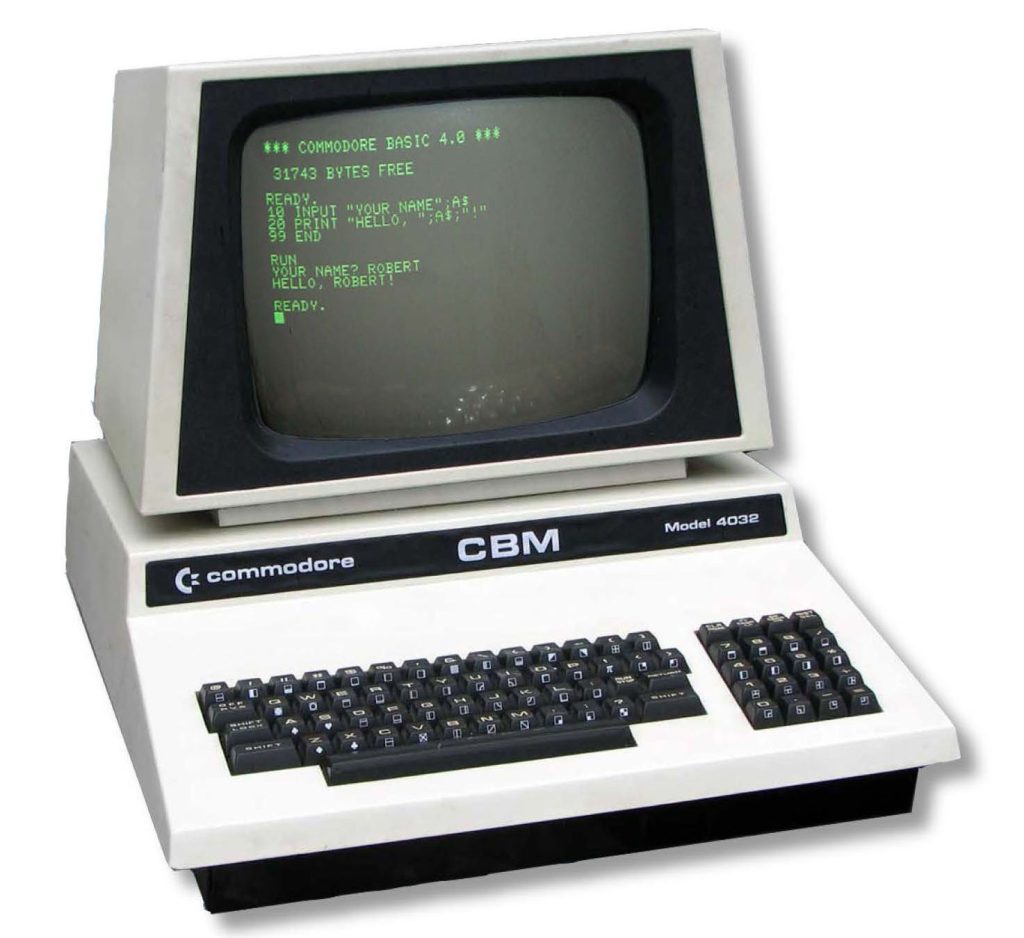
Fortunately for me, Martin Basil a computer hardware engineer I worked with at that time persuaded me to opt for a “real” computer and recommended the Commodore PET over the ZX80. Despite its much higher price tag, the PET offered far superior performance. Unfortunately, unlike the ZX80, the PET was way outside of my budget. As I delved into the microcomputer scene the rapid pace of development made it seem like new microcomputer models were being released almost daily. It was a golden age of experimentation and competition. Each new model brought its own set of features, capabilities, and price points, catering to a diverse range of consumers from hobbyists to small businesses. This constant stream of innovation contributed to the dynamic and exciting atmosphere of the early microcomputer era, laying the foundation for the digital revolution that would follow in the years to come. However, I still wanted my Commodore PET. As luck would have it, I didn’t have to wait too long. The company I worked for had a good year and paid out a generous Christmas bonus to all employees. It was put to good use: a CBM4032 for me and sheepskin coat for my wife. And so the rest is history. I lost touch with Martin about forty years ago. I wonder if I should try to track him down and thank him for his ‘wise’ advice or blame him for my Commodore/Amiga addiction? 😉
With that in mind, I’ll be heading to the UK in a couple of weeks to visit family and participate in two distinctly different retro computer shows taking place in June—RetCon 2024 in London and KickStart 02 in Nottingham. If you’re planning to attend either show don’t hesitate to drop by and say hello!

Preservation
Staying with the retro vibe, Chris Collins, an avid Amiga (and Atari) enthusiast and collector based in San Francisco, has been actively involved in preserving the Amiga’s rich history. A few years back, I coordinated with Chris to organise the retrieval of Carl Sassenrath’s extensive collection of Amiga documents and related hardware from Carl’s basement as he was preparing to move home. Carl, as all Amigans know, is the pioneering Amiga software developer famed for creating the original Amiga Exec kernel and the multitasking capabilities of AmigaOS. At the time Carl wrote to me, “I’ve also found a number of developer manuals and docs, including a binder from very first Amiga devcon and also CDTV dev notebooks. Plus, a few binders of VIScorp ED project (Bill Buck and Don Gilbreath). Plus, a sweater from the Milan Euro Amiga dev con, never worn.”
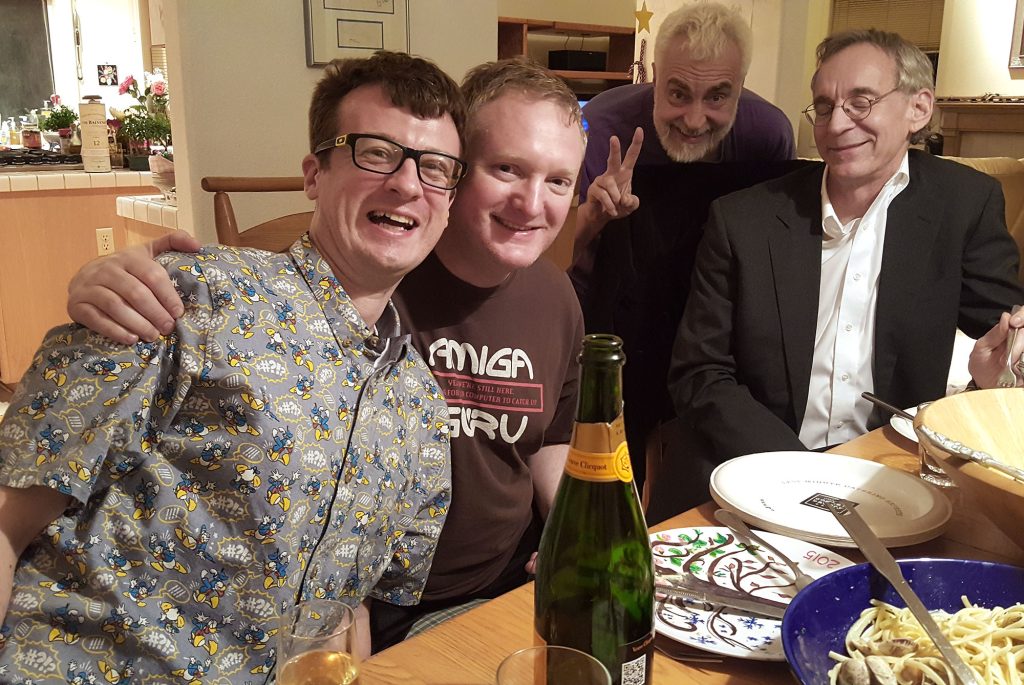
In July 2021 Chris drove to Carl’s house in Ukiah to pick up his Amiga related treasure trove. I had to admit I was more than a little envious when he wrote to me describing what he had retrieved from Carl’s house. 😉
“there were a lot of off the shelf things like CDTV’s but there are a couple of things that are perhaps important. My car was pretty much filled with old monitors, 2000’s etc. Firstly, these IC’s pre-date Commodore. These are early spins, I am sure………… I think these chips IMHO are big news as they will be die-shots of probably the earliest spins of the Amiga (post TTL wire wraps). The other thing is that Carl gave me a sh*t load of folders. Most are just regular binders of stuff but there are some CDTV internal dev……..There are a bunch of Commodore manuals like early customer support email dumps that I think they used as an early CRM database. There is at least one folder for VIScorp work that Carl did…….The other thing I need to do is see if I can get the hard disks spun up from some of these Amigas. I suspect there may be some gems.”
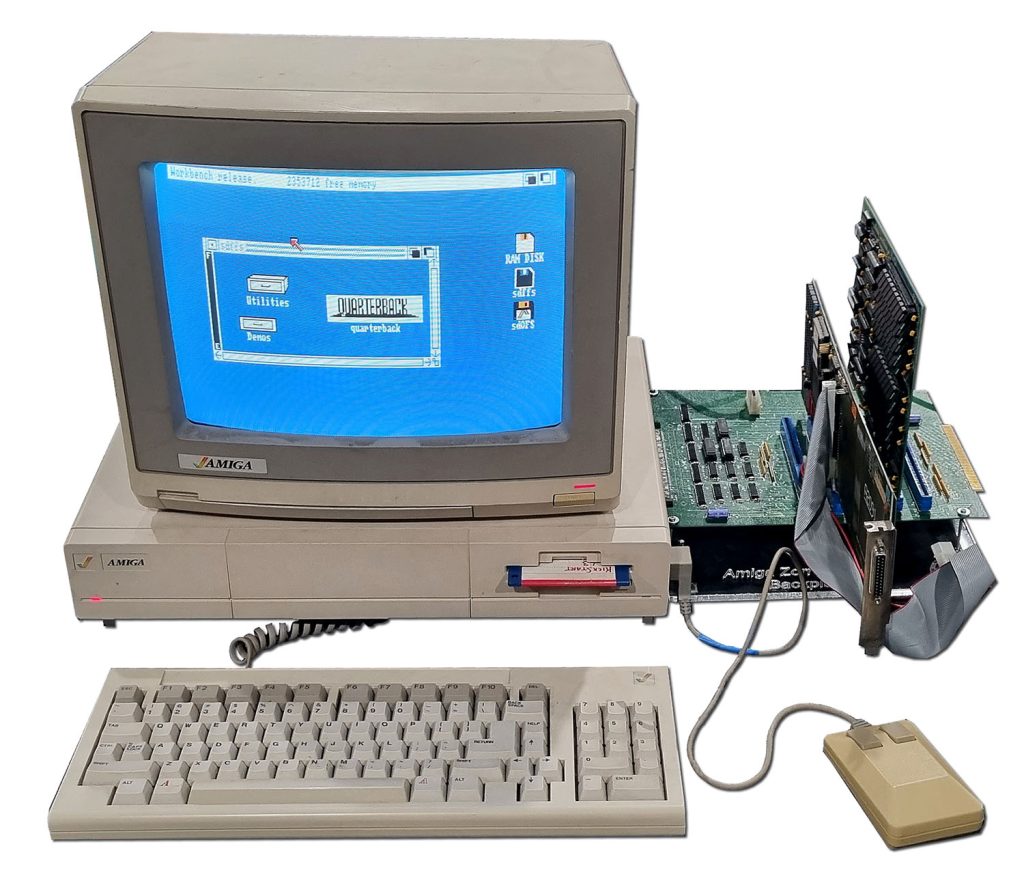
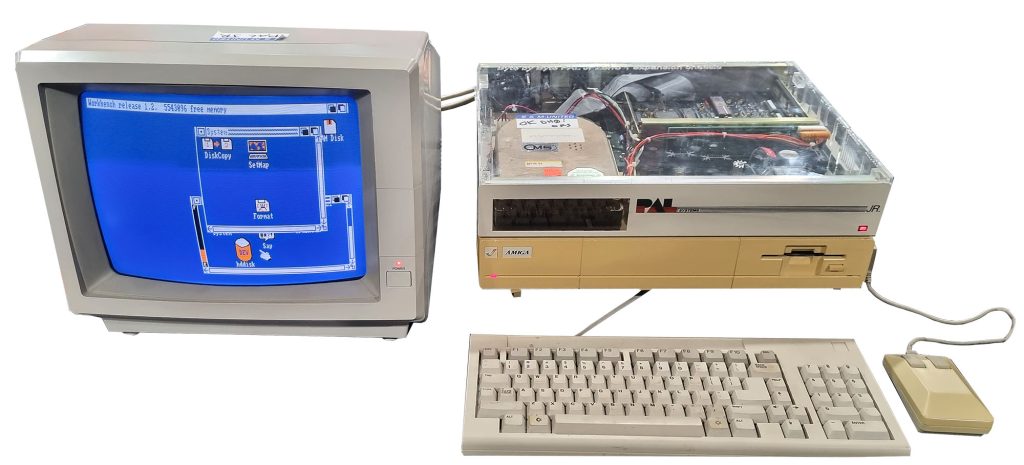
Last year at AmiWest 2023, in association with another key Amiga developer, Dale Luck, along with SACC’s Alan Swithenbank, Chris displayed a range of Amiga 2.0 prototype hardware and industrial design work created by the Amiga team before Commodore shut down the Los Gatos Amiga facility and moved everything to West Chester. Alongside Ranger mock-ups, there was a working Ranger Zorro backplane designed to enhance the expandability of the Amiga 1000 by addressing its chip RAM memory space. He also showcased a working PAL Jr Zorro 1 expansion chassis, created by Carl Sassenrath when he worked for Byte by Byte.
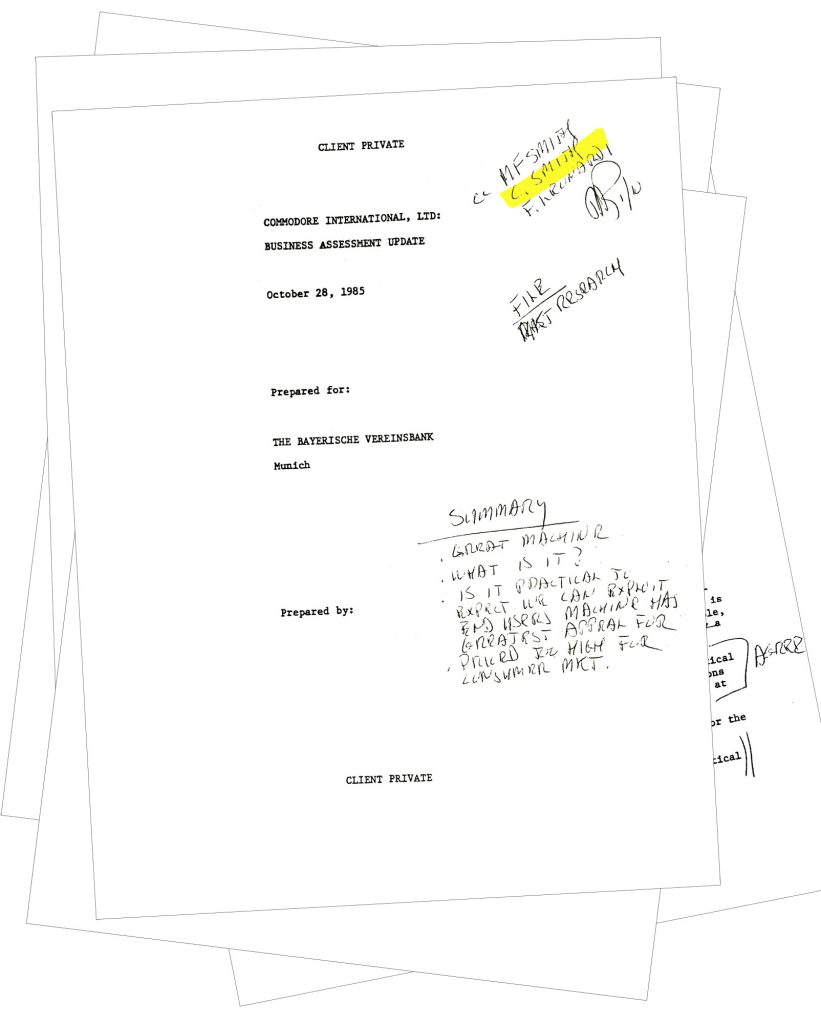
Recently Chris circulated an historical “business assessment update” report on Commodore International Ltd, prepared by the Stanford Research Institute (SRI) in October 1985 for Bayerische Vereinsbank in Munich Germany. In the report, which is mainly focused on the Amiga’s release, SRI could only site four strengths of the new Amiga and one of those was that it could be made IBM compatible! In contrast, the report listed a dozen weaknesses related to Commodore and the new machine. One of which concluded its low price combined with Commodore’s reputation as a home computer company has caused “credibility problems in the business market.” I pointed out to Chris that the SRI report had highlighted three times as many weaknesses compared to strengths! Unfortunately, I can’t print his reply. 😉
Admittedly the report was mainly focussed on the business potential of the Amiga and the stiff competition it faced from the IBM PC and Apple Macintosh incumbents. Overall the report was quite negative about Commodore and the Amiga’s prospect. In a handwritten summary scribbled on the first page someone had written four comments:
1. Great machine 2. What is it? 3. Is it practical to expect we can exploit end-users machine has greatest appeal for? 4. Price too high for the consumer market
Anyway I want to thank Chris and the team for preserving the Amiga legacy for future generations.
The back story
Following the release of the third and final volume in the “From Vultures to Vampires” series, I’ve received several requests for advice on how to go about writing a book about the Amiga. David Pleasance was the inspiration for the series and I would not have started the project if he had not decided to write a follow up his to original book, Commodore: The Inside Story. While I researched and authored the trilogy, David managed all the heavy lifting related to administration, publishing, customer communications, and shipping. This left me free to concentrate on telling the story of the post Commodore years. Without his effort the books would not have seen the light of day.
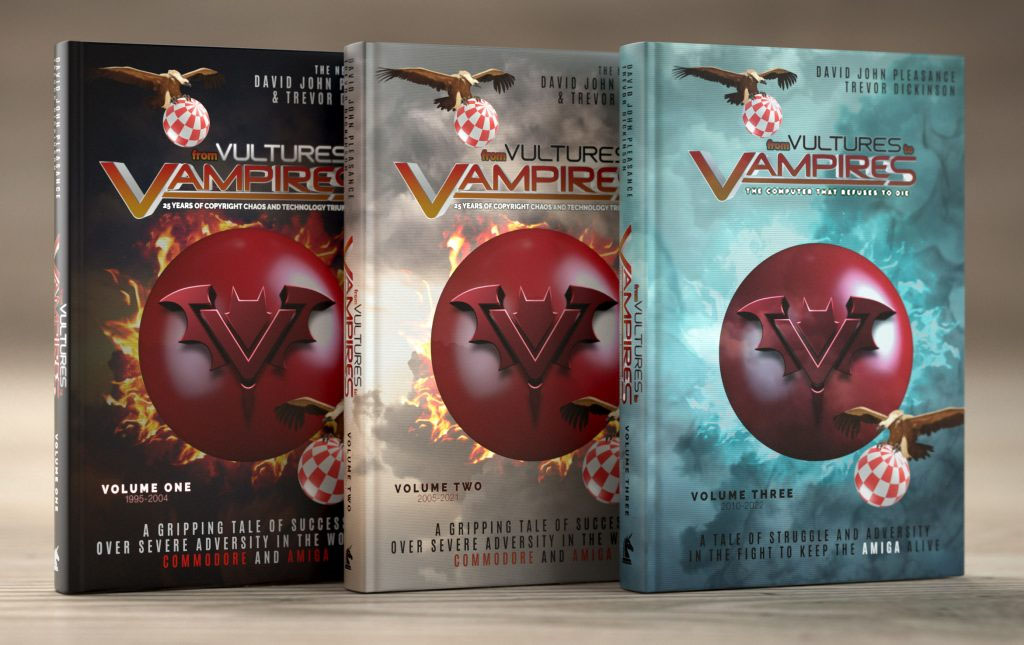
Another crucial figure behind the series was Simon Busby, a highly skilled and professional book editor. He ensured the entire process ran smoothly, even when we expanded the series’ scope not once, but twice! Throughout the work he was approachable and collaborative, grasping my vision and guiding the editing process smoothly with his attention to detail underpinning the project. He meticulously cited every reference, boosting the project’s credibility, and ensured each volume maintained a consistent look and feel, transforming the project into a cohesive series. Not only that, his expertise extended to layout design, making the books visually appealing across all physical and digital publishing formats. If anyone is thinking of writing a book and is looking for a talented editor, I have no hesitation recommending Simon.
The editor’s story
I asked Simon to share his journey from the rather staid world of legal print designer to the rarefied atmosphere of retro book editing.
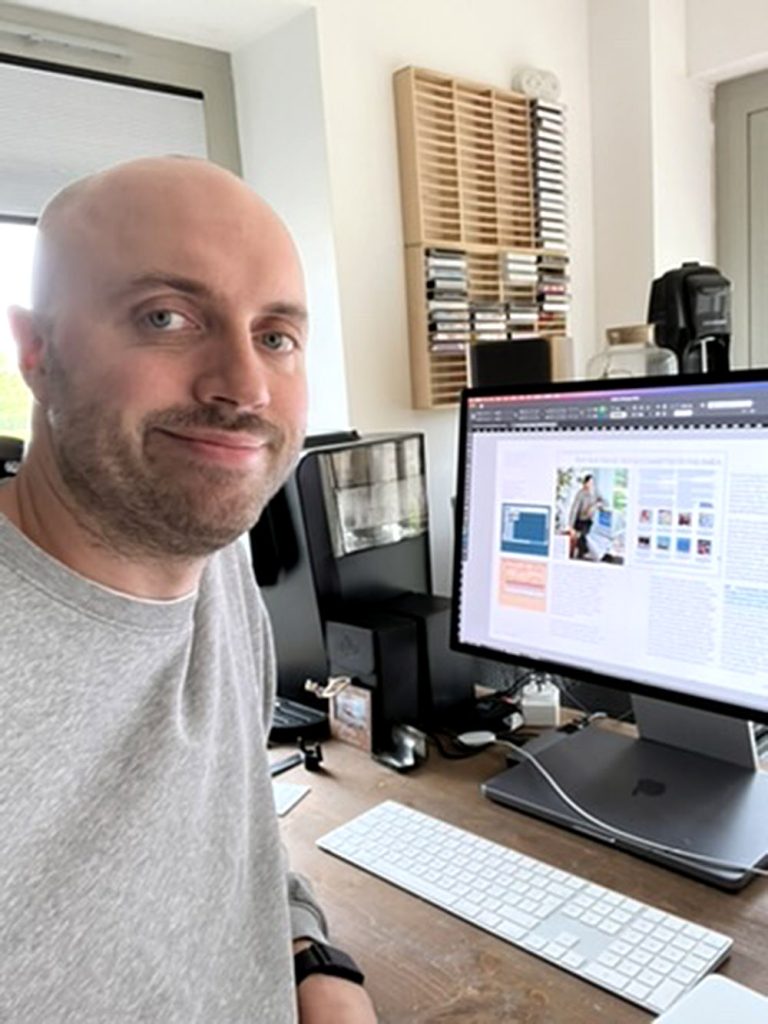
I suppose I should start with a brief bit of background on myself as a prelude to my experiences working with Trevor! I began working in print in 2011 at a legal publisher in London, where I worked my way up the ranks in its production department as a print designer for over a decade. I would hazard a guess that I’d been in some way involved in around 3,000 books and a bunch of magazines. But was legal publishing my calling? Not at all! Couldn’t tell you a thing about law even after all that time.
Video games, however, have been a lifelong hobby, from owning a Mega Drive and Acorn Archimedes back in the day, via building my own full-size MAME cabinet in 2014, to owning various pricey FPGA devices in the present day! As the retro scene was blossoming online and across various media, and as my day job chipped away at my soul, I began looking for ways to combine my job skills with my hobby. Which brings me to my involvement with From Vultures to Vampires – and how I met Trevor! I suppose it all started, in a roundabout way, back in 2016.
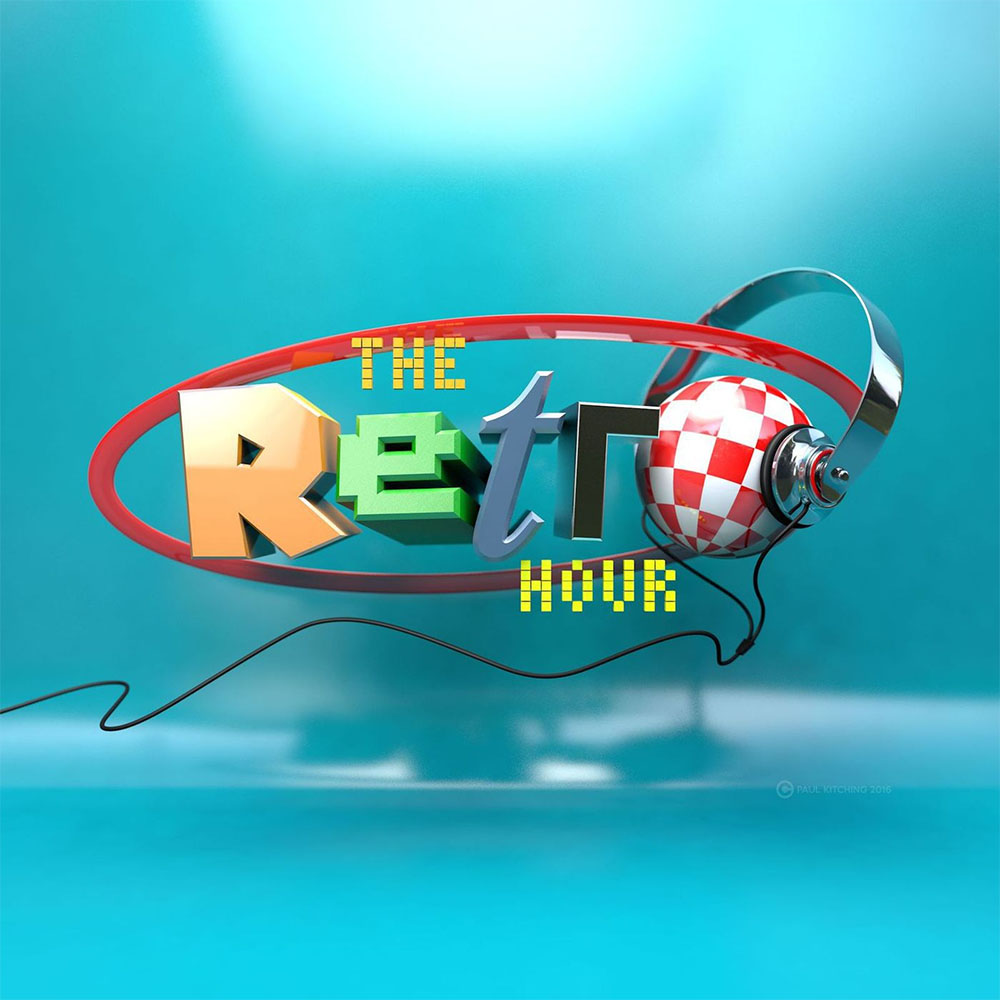
I had just discovered a podcast called The Retro Hour, and, looking for “extracurricular” book projects to work on outside of my job in legal publishing – particularly ones covering topics I cared about – I decided to send one of its hosts, Dan Wood, an email proposing collecting some of their interviews into a coffee table book.
The “Retro Hour Book” itself went on pause for a number of years (we would eventually finish it in 2023!), but in early 2017, Dan sent me an email with David Pleasance CC’ed and a proposition to work on a book chronicling his time at Commodore. I excitedly agreed to step on board as editor and designer.
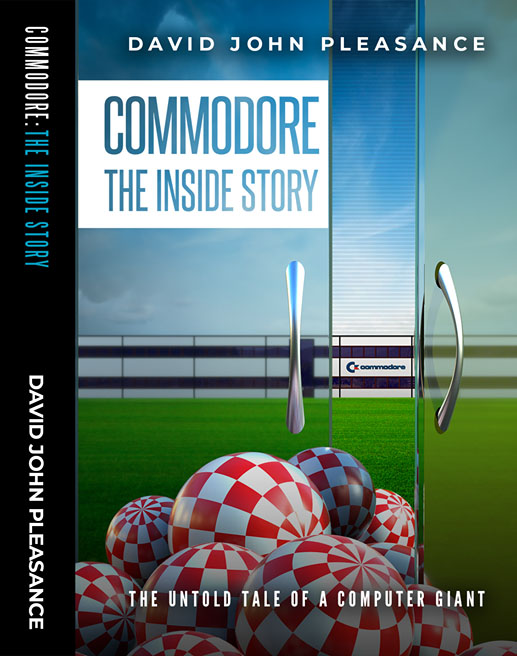
That book – Commodore: The Inside Story – was successfully Kickstarted in April of that year and reached backers in late 2018. In all honesty, making that book was a much bigger task than I anticipated, and in my excitement, I originally offered to do the job for David for free (though he kindly offered me some payment at the end). But after over a year of working nights and weekends alongside my day job, it became clear that creating a book on one’s own is no small feat. Yes, the text was provided for me, but I’m sure David wouldn’t mind me saying that some of the text was fairly rough, and the editing portion was quite involved. Aside from simple spelling and grammar corrections, I had to consider the flow, tone and order of the writing. This was also my first attempt at editing proper – I have considerable experience as a proofreader and subeditor, but editing was, at this point, a fairly new skill.
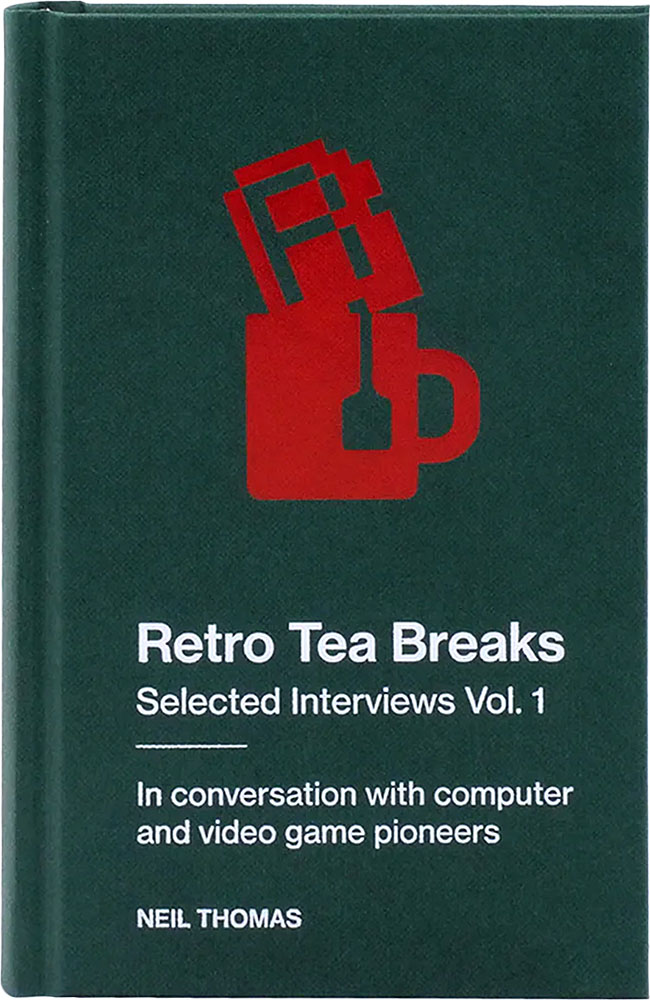
Despite the difficulties, the job was rewarding and as a result, when David contacted me again in 2020 to work with him on a new book in collaboration with Trevor Dickinson – who, until that point, I knew largely as the foreword writer to The Inside Story! – I said yes (this time for an agreed fee!). By this point, I had just completed a book with Neil Thomas of the YouTube channel RMC – Retro Tea Breaks Vol. 1 (look out for Vol. 2 later this year!) – and was looking for more of that “extracurricular” work.
The original plan for Vultures to Vampires was for Trevor and David to co-write it – in the end, the lion’s share of the writing and research was handled by Trevor, while David helped with more administrative tasks, such as managing the Kickstarter campaign, communicating with the printers, and handling communications with backers and the community. If I recall correctly, David had asked for the book to retain a similar format to The Inside Story, so the format and rough layout approach are similar, with a few design tweaks where it counts. Paul Kitching would once again return to provide excellent cover artwork. The original plan was also for the book to be a single volume! As backers will be aware, the book ballooned in size and, rather than creating a single huge tome that would have torn through the allocated budget in postage alone (it would have resulted in 972 pages come the finish!), the decision was made to split it into two and seek further backing.
Trevor was on a roll collecting and detailing as much information as possible, and new developments were happening “live” even as we beavered away. In fact, by July 2022, as volume 2 progressed, it became clear that there was too much content even for two volumes, and an additional splitting would be required. Prospective print and postage costs were increasing still, and rather than cut the story short, David sought further backing. While this frustrated some backers, this is an unfortunate symptom of not predicting the scale of a task in advance. (Would we have embarked on the task if we had known it would get so large? Perhaps not! So maybe it is just as well??) This time, the writing was much easier to edit, and Trevor was incredibly helpful in providing the vast majority of the images used in the book.
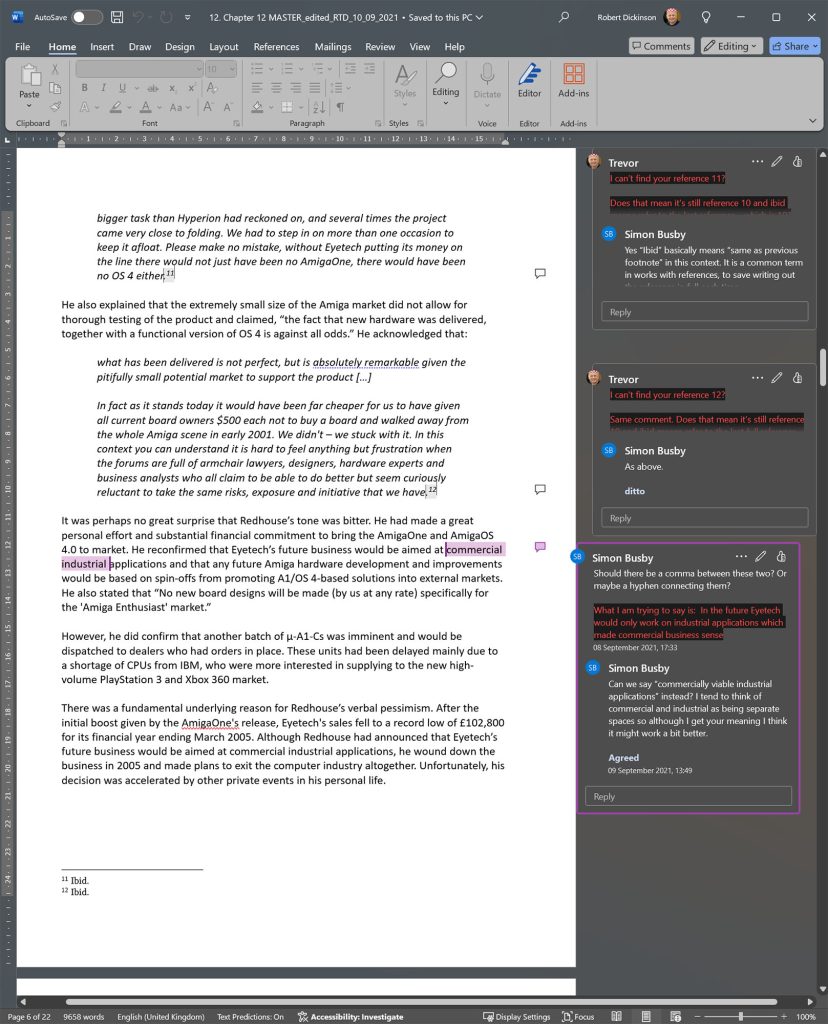
And so the workflow was thus: Trevor would supply me with a chapter or few at a time, I would edit them in Microsoft Word, making a few comments for Trevor’s attention as necessary, and pass them back. There would be a bit of back and forth until the chapter was “done”, and then I would lay it out into a template I had created in InDesign. This typesetting stage can be more involved than one might think and is, to my mind, an invisible art – in that it’s working best when you don’t notice it’s there. The text was massaged (and sometimes further edited) to fit on the page and around the many images, which needed to be positioned as close to their mention in the text as possible. On my insistence (and, I think, to Trevor’s growing dismay!), we included as many source references as possible. In retrospect, I think this may have been slight overkill on my part – a holdover from my work in legal publishing, no doubt. But they certainly do no harm to the books, and I think “credit where credit is due” is a good ethos for most works that often reference other media.
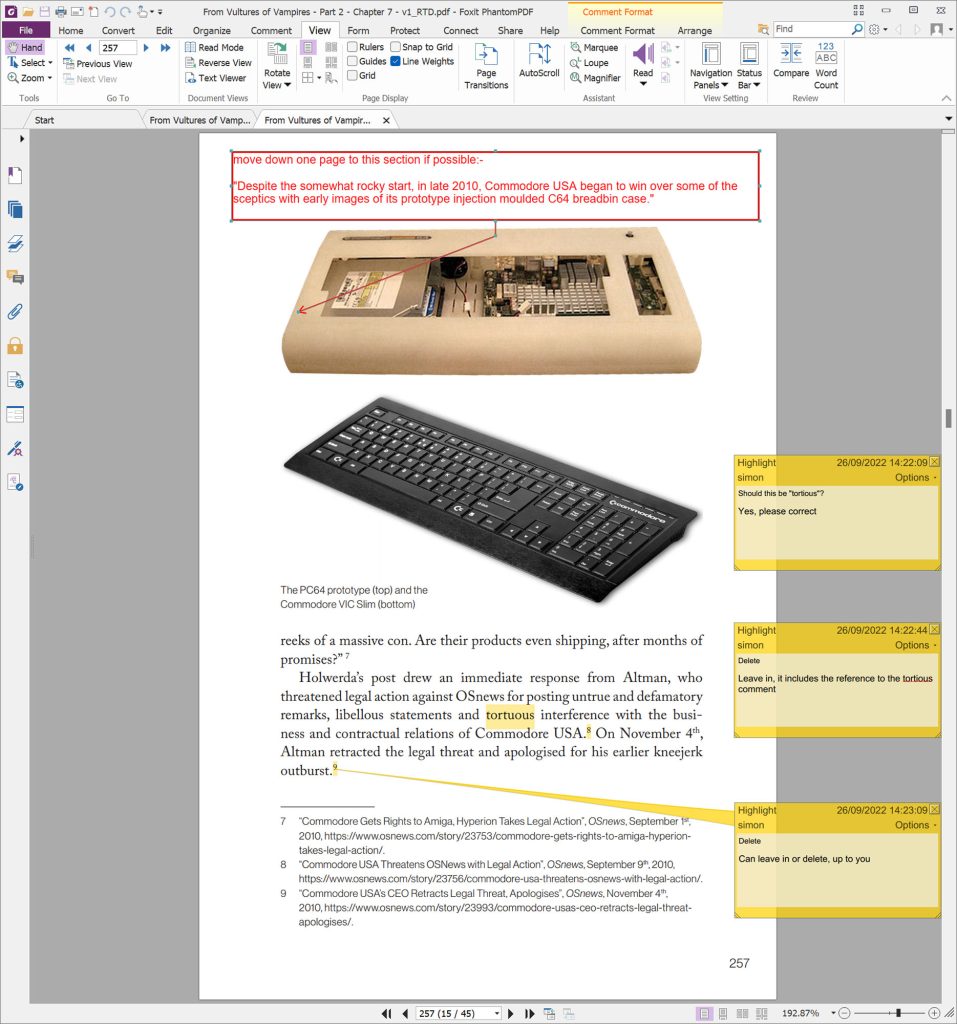
In the end, volume 1 went to press in July 2021, volume 2 went in roughly April 2023, followed in June by volume 3 – three years after David first told me about the project and over two years after we started in February 2021. At times, it was frustrating – two years is a long time to work on a single project that at one point had Sisyphean qualities! – and again, I was doing this largely in my free time. But I’m glad we did it and that Trevor got to tell the story in full. Although, of course, the tale of the Amiga continues to develop. Maybe there will be a volume 4?? (Trevor runs and hides!)
Many thanks Simon, you were a pleasure to work with, even if you did insist on me sourcing every single reference!
Final Writer 7 – Special Edition 2024
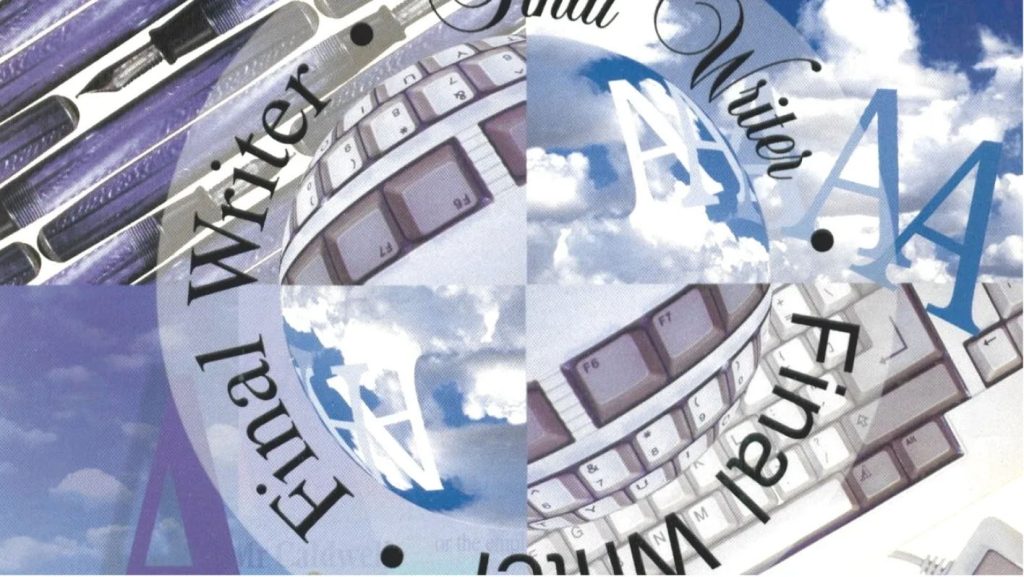
The Amiga had an impressive selection of word processors, but for me, the standout products were the WYSIWYG offerings: Final Writer by Softwood and WordWorth by Digita. My own personal favourite was Final Writer published by Woodrow (Woody) A. Williams of Softwood, Inc. I recall upgrading from Final Copy, an earlier Softwood word processor, and purchasing every new Final Write update as they were released. It was my word processor of choice on any machine up until the early 2000s.
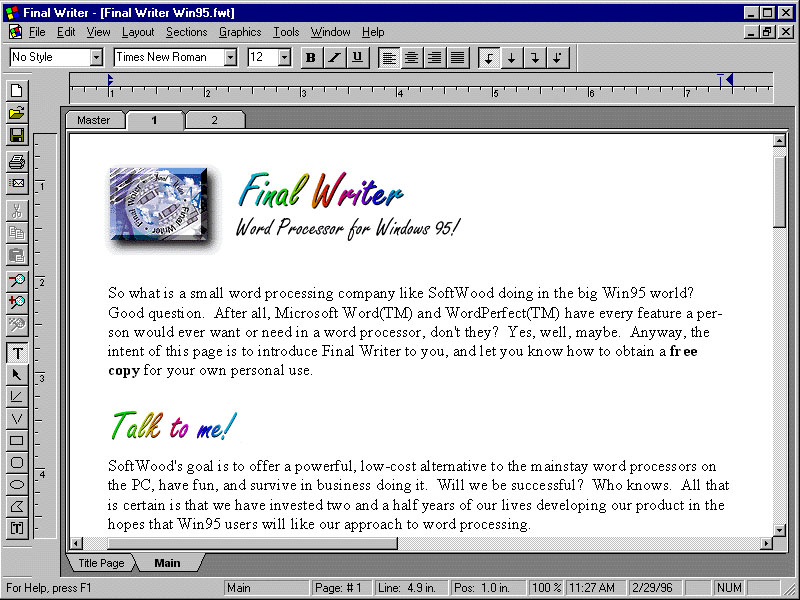
I even bought the Windows 95 version which was released in 1996, however it was very buggy and quickly discarded. Softwood finally left the Amiga scene after the release of Final Writer 97, unsurprisingly published in 1997. It was a significant update which moved Final Writer into the realm of Desktop publishing. Softwood claimed that FW97 gave users the best of both worlds by offering a superior word processor that “eliminates at least 95% of the reasons Amiga owners use a desktop publishing program”. Unfortunately it would be Softwood’s last hurrah!
After the release of FW97, Softwood ceased all Amiga software development. As the Amiga market contracted, the flow of revenue from software sales and upgrades gradually declined and finally dried up. To stave off bankruptcy, Williams changed his business model and began to provide software and internet web services to the adult soft-porn industry. Its first products included a “Fitness Centrefolds” screensaver for Windows and a “glamour models” website.
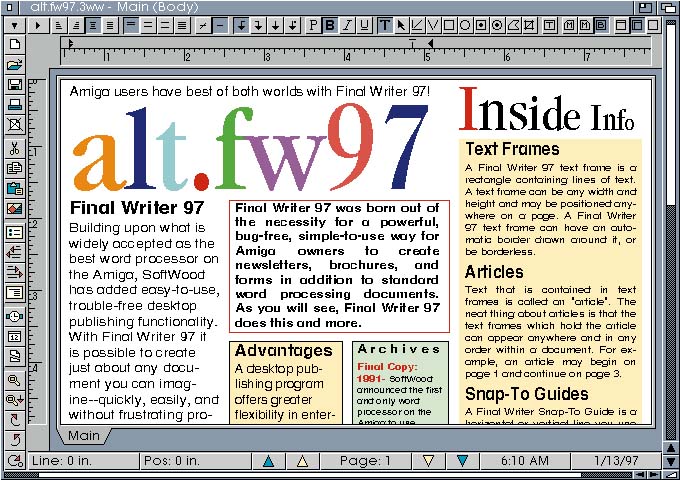
There were a couple of failed attempts to resurrect Softwood’s office program suite. In late 1998, Amiga media reported that Tommy Hwang of Soft Partners had acquired the rights to Softwood’s Final applications (Final Writer, Final Copy, and Final Data) and planned to release a Final Office CD, including holiday clipart and Final Writer for Windows 95. This initiative never materialized, and Soft Partners disappeared. In November 2000, Ryan Czerwinski of Merlancia announced negotiations to purchase Softwood’s product line to update and expand the Amiga products. However, Woody Williams of Softwood indicated that no formal offer was ever made.
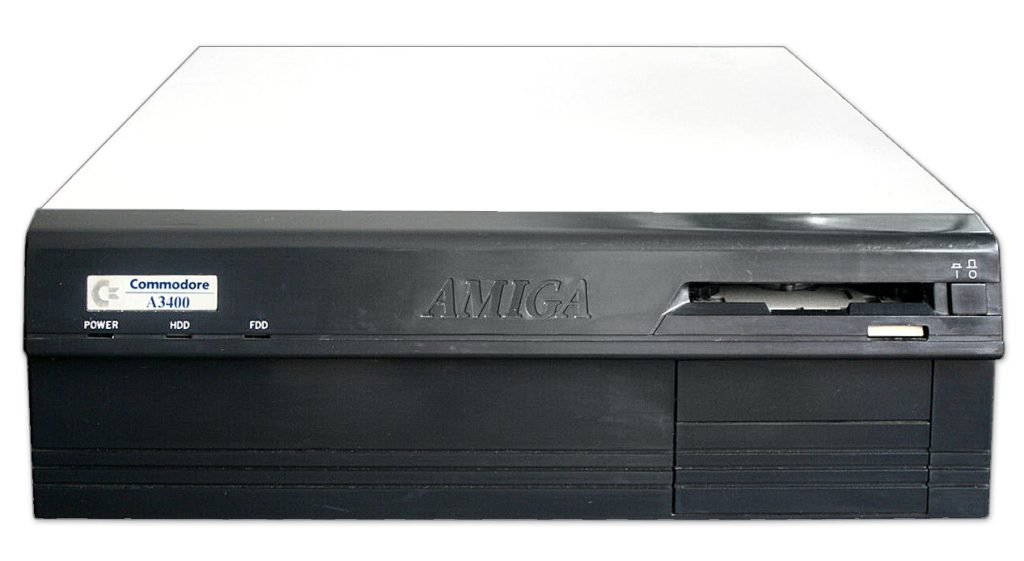
It was not until Timothy ‘Terminills’ Deters, long time Amiga enthusiast, acquired the rights to Final Writer from Williams in 2015 that any serious redevelopment work started. At the same time Deters also purchased Softwood’s old Amiga hardware including an Amiga A3400, a beta release of the A4000 which was only supplied to registered developers like Softwood.
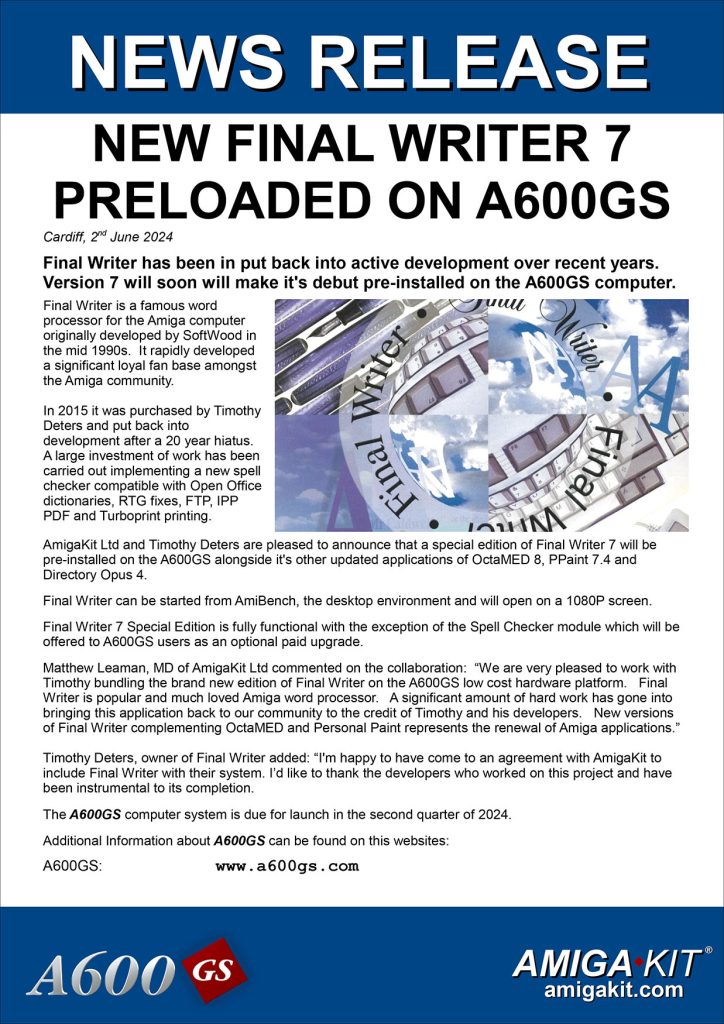
Fast forward to 2024. Amiga Kit has just posted a news release in collaboration with Timothy Deters announcing a special edition of Final Writer 7 will be pre-installed on AmigaKit’s upcoming A600GS. According to the release, “A large investment of work has been carried out implementing a new spell
checker compatible with Open Office dictionaries, RTG fixes, FTP, IPP, PDF and Turboprint printing.” The special edition of FW7 supplied with the A600GS does not included the spell checker module but this can be purchased separately. According to Timothy, posting on Amiga.org, he hasn’t “decided a final price yet however I have decided that A600GS owners will get at least a 20% discount on the full version.” He also confirmed that the new version of Final Writer can print to modern printers. Personally I can’t wait to give it a try.
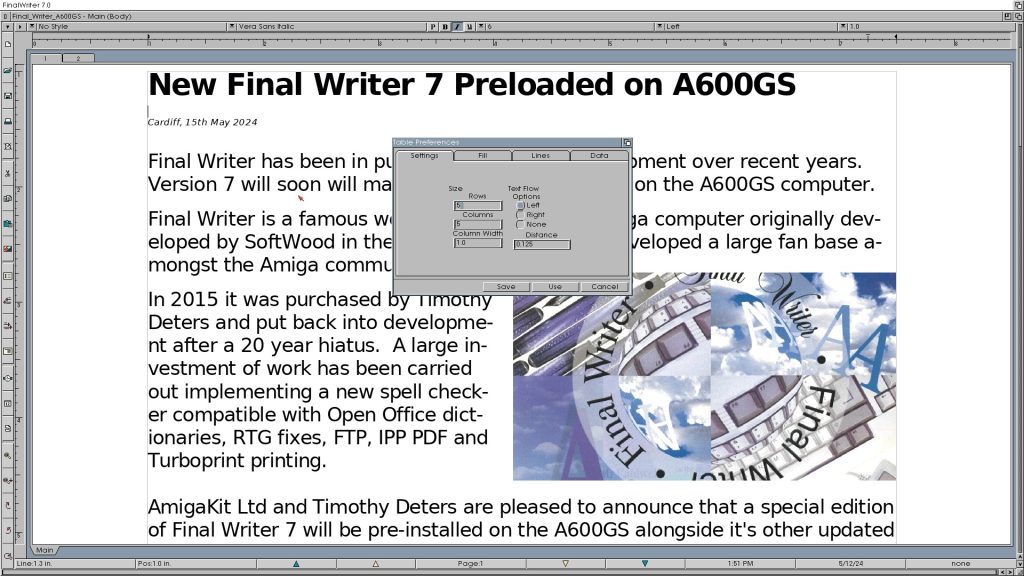
Fast & Furious Good Stuff
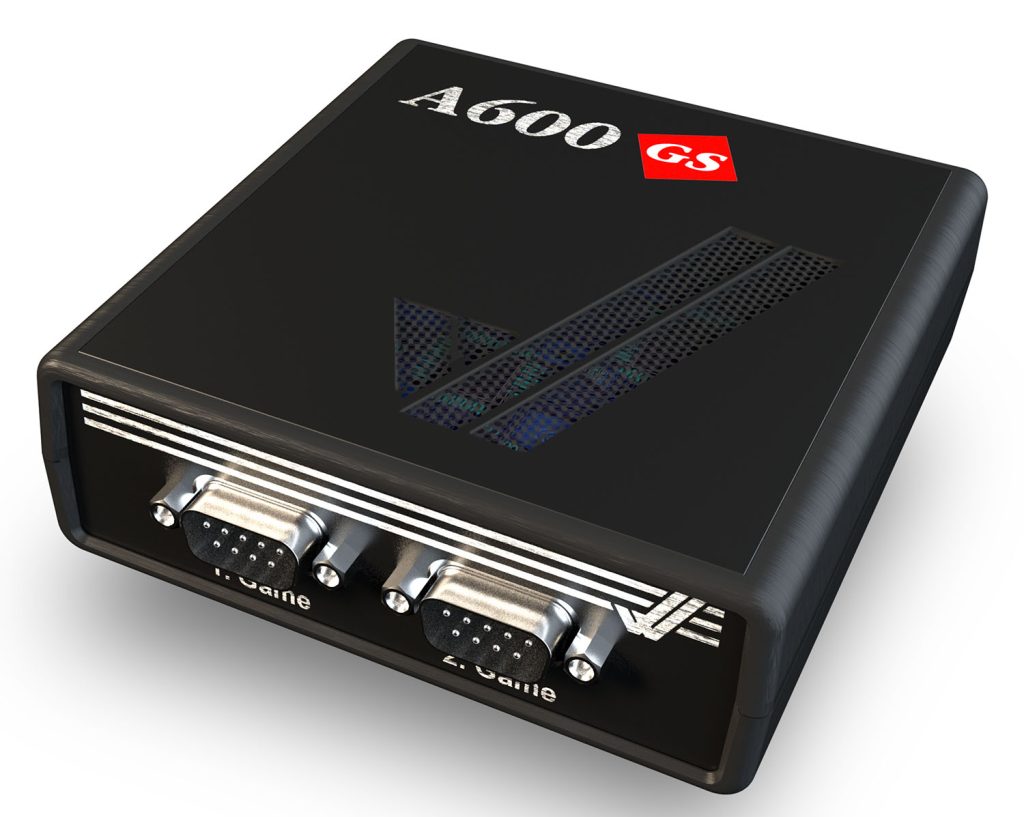
If you are planning to visit either UK show in June you will be able to see the A600GS, AmigaKit’s new all-in-one Classic 68K Gaming system and AmiBench powered desktop compatible computer in action. Not only does it run and support AGA, ECS and OCS games and demoscene classics, AmiBench’s desktop environment opens to a full 1080P screen. The A600GS is bundled with updated versions of A-EON Technology’s OctaMED 8 and Personal Paint 7.4 which are pre-installed along with Directory Opus 4 and now includes Final Writer 7 special edition. In fact the A600GS is compatible with almost all Amiga 68K productivity software.
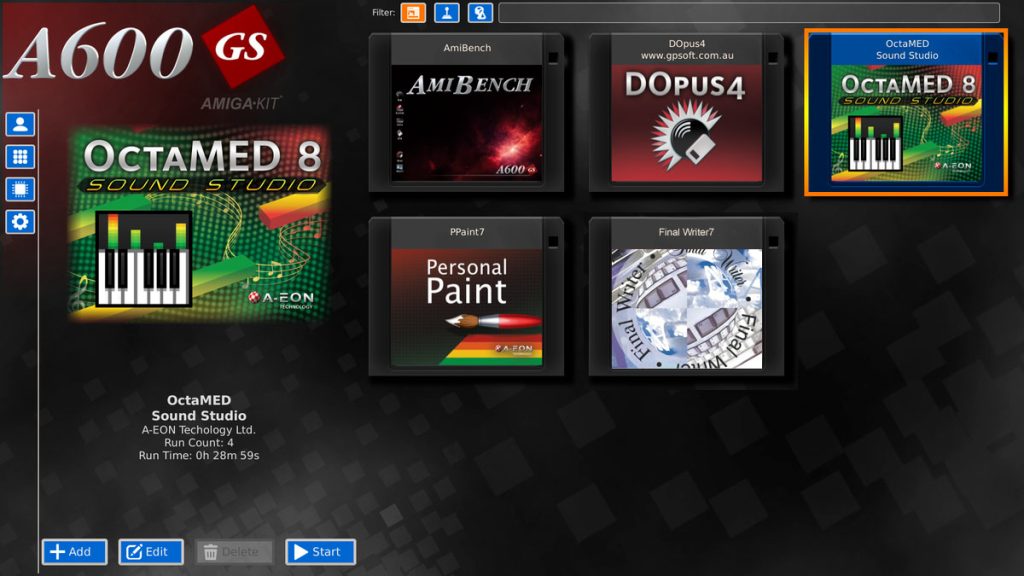
I’m not not really much of a game player and I’ve always wanted to recreate a portable turbo charged version of my old Classic A4000/060 tower system. It was my main computer system and included a massive suite of Amiga productivity software and was my business workhorse until the early 2000s. Even after it was probably used more than 50% of the time for the next five years. In comparison, the tiny lightweight A600GS box measuring a mere 11 x 10.5 x 3.5 cm, runs at a blistering 257.61 MIPS according to Sysinfo, will be the perfect solution for my Classic mobile needs especially as it includes wifi and Ethernet connectivity and HDMI for connecting to modern TVs, to download system updates and 68K software from A-EON’s AmiStore.

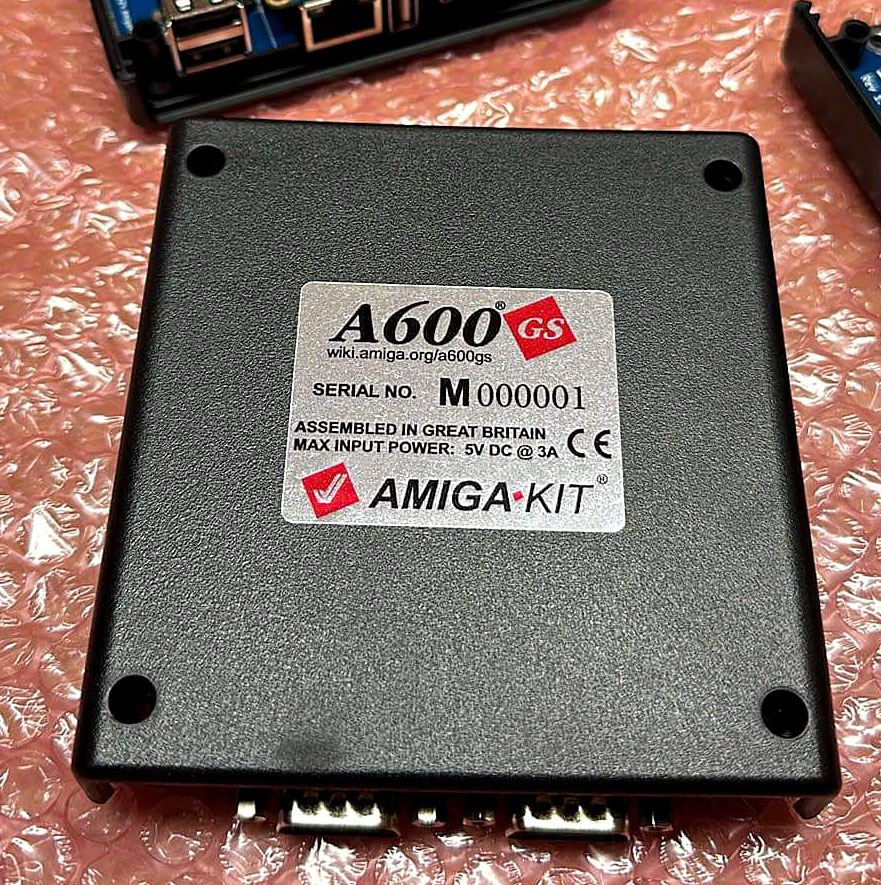
As shipped, the A600GS will be supplied with special A600GS branded joypad. A USB mouse is required to use the AmiBench desktop and an optional A600GS branded mouse is available from Amigakit. Any USB keyboard should also work although AmigaKit will be offering a A600GS branded version later this year. At the time of writing, the first batch of A600GS’s are being assembled by AmigaKit in preparation for the full product launch. I hope to pick up my A600GS when I visit the UK later this month. Exciting times.
The golden child – Take 2
If you are a regular reader of my blog, you might recall that back in 2018, I rehoused my Nemo X1000 v2.1 motherboard in a special limited edition White and Gold Define R5 Fractal case. My motherboard was the golden board, the first working Nemo v2.1 prototype created by Varisys way back in 2011, representing the final, fully validated version of the design for the beta test programme. Varisys used it for their exhaustive series of tests to prove out the v2.1 design. Once finished the board was shipped to AmigaKit along with a batch of Nemo boards destined for AmigaOS 4 beta testers.
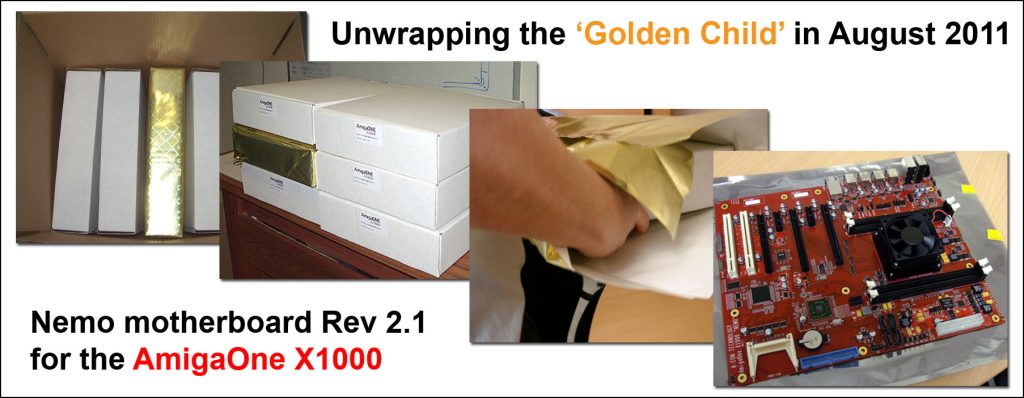
When Chris Follett, AmigaKit’s technician, opened the shipment, he discovered the box holding my board was wrapped in gold wrapping paper, denoting its golden status. He immediately dubbed my board the Golden Child. He installed it into a white Boing Ball engraved Fractal case tower. My AmigaOne X1000 was used as AmigaKit’s in-house test system for the next three months.
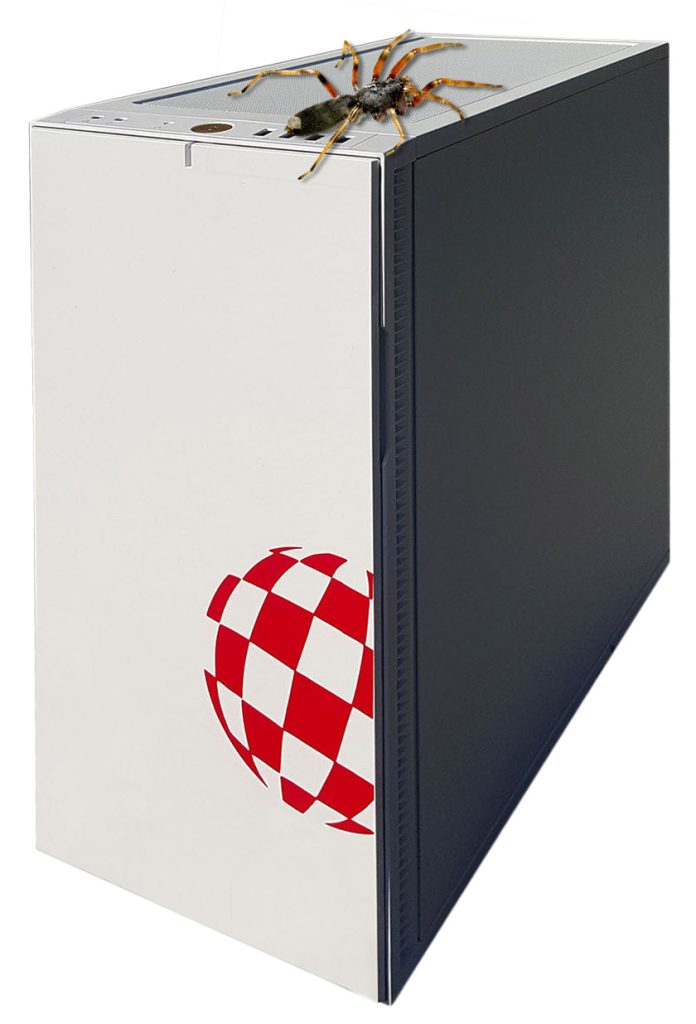
This is all ancient history now, so why am I recalling this tale? I’ve been slowly reorganising my Commodore and Amiga collection in its new purpose-built location when time allows. I unboxed the AmigaOne X1000 and began searching for power, monitor, and Ethernet cables to hook it up. I turned my back for a minute or two, and when I returned, there was a massive white-tailed spider sitting on top of the X1000 case, staring at me with its eight little beady black eyes. Shiver! Unlike Australia, which is renowned for its diverse and deadly wildlife, New Zealand is relatively safe, with only a few venomous spiders, such as the white-tailed spider, whose bite is painful but generally not serious for humans. Still, I wasn’t taking any chances and scooped up the spider in a dustpan to carry it outside. Stupid idea, really. The spider immediately ran underneath the dustpan towards my hand, forcing me to juggle the pan to avoid its venomous bite! I reached the door, still juggling the pan, and with a mighty throw, chucked the spider and pan into the garden. OK, I admit it, I’m not keen on spiders. Once the white-tail was dispatched, I returned to the X1000 and opened the front door of the case. The black cloth lining inside the door was encased in a spider’s web, which I quickly removed. I connected the X1000, but would the Golden Child boot to Workbench? I’m pleased to say it did on the first try, although I had installed a new coin cell battery as a precaution before powering up the machine.
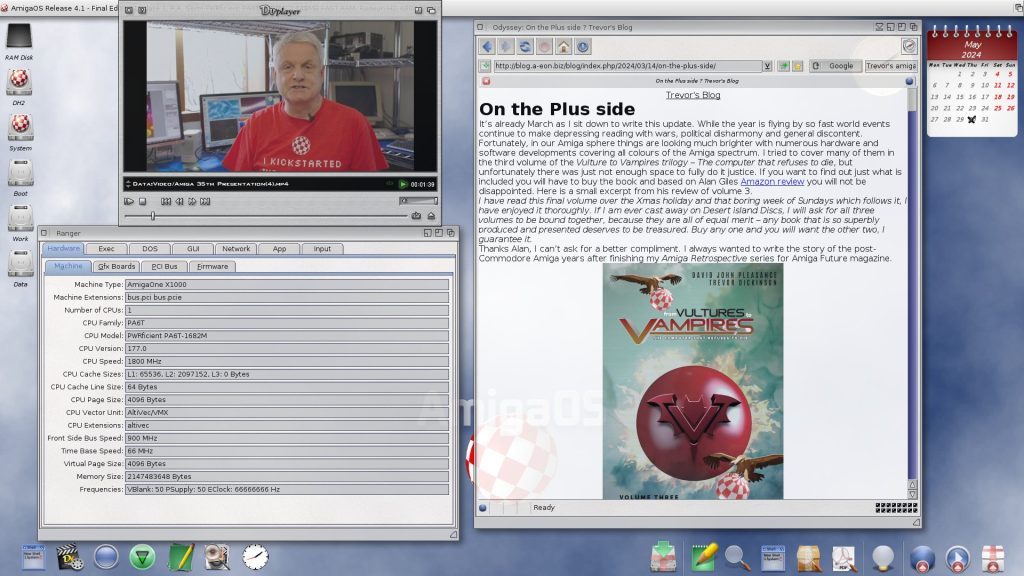
The never ending Linux kernel story
On Sunday May 12th Linus Torvalds announced the release of the 6.9 Linux kernel. He wrote, “So 6.9 is now out, and last week has looked quite stable (and the whole release has felt pretty normal)………Anyway, please keep testing, and obviously this means that tomorrow the merge window for 6.10 opens. I already have a few dozen pull requests pending, I appreciate the early birds.” Thanks to Christian Zigotzky and A-EON’s core team of Linux beta testers the X1000 and X5000 are both fully supported. However, no sooner had 6.9 been released the first release candidates for the 6.10 kernel were being circulated by Christian. It truly is a never ending story!
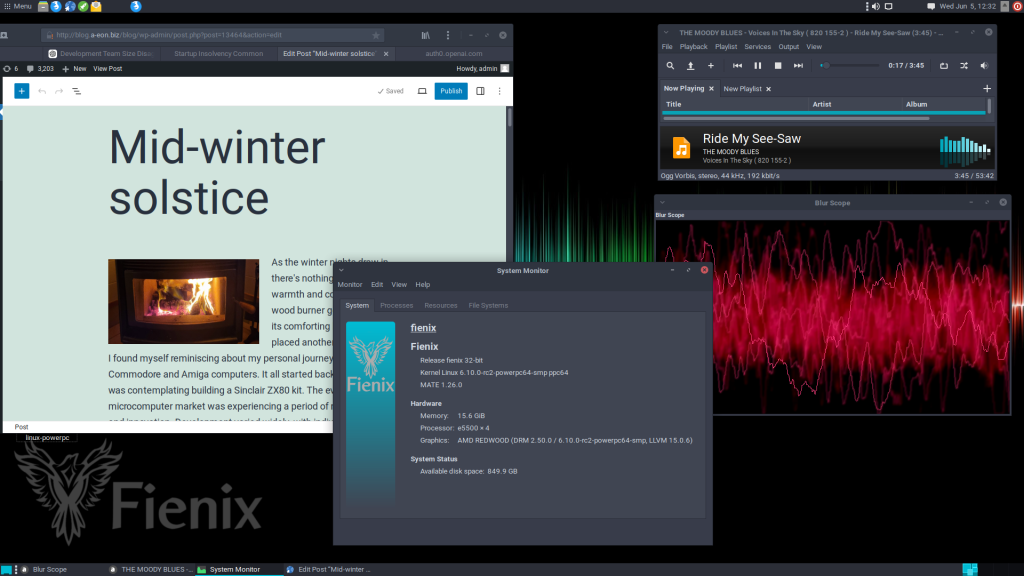
Boxed and Ready
Thanks to Robert Bernardo for providing the photo of his A1222 Plus system installed in a compact Fractal Node 202 computer case with an AFox Radeon RX550 graphic card and a hefty 750W power supply.
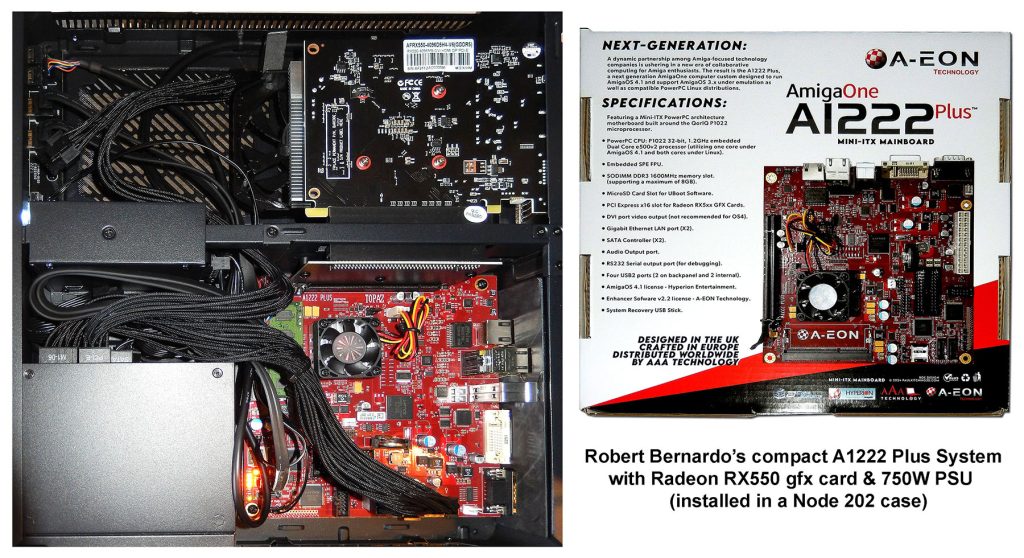
Boing Ball mania time
You probably think I walk around looking for images that remind me of my Amiga hobby/passion. Who me? Another selection of images spotted while out and about in Wellington, New Zealand.

………until next time